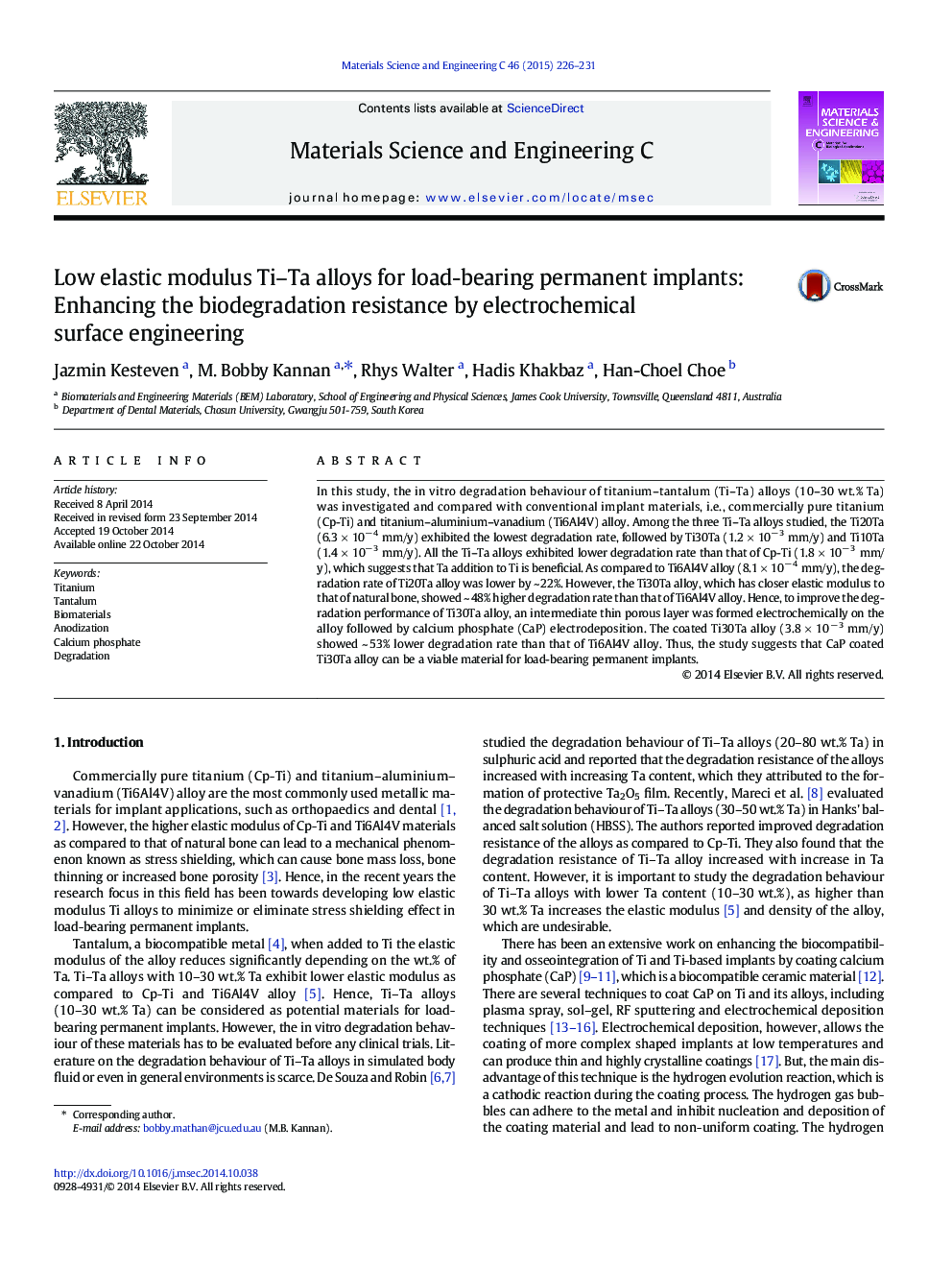| Article ID | Journal | Published Year | Pages | File Type |
|---|---|---|---|---|
| 7869815 | Materials Science and Engineering: C | 2015 | 6 Pages |
Abstract
In this study, the in vitro degradation behaviour of titanium-tantalum (Ti-Ta) alloys (10-30 wt.% Ta) was investigated and compared with conventional implant materials, i.e., commercially pure titanium (Cp-Ti) and titanium-aluminium-vanadium (Ti6Al4V) alloy. Among the three Ti-Ta alloys studied, the Ti20Ta (6.3 Ã 10â 4 mm/y) exhibited the lowest degradation rate, followed by Ti30Ta (1.2 Ã 10â 3 mm/y) and Ti10Ta (1.4 Ã 10â 3 mm/y). All the Ti-Ta alloys exhibited lower degradation rate than that of Cp-Ti (1.8 Ã 10â 3 mm/y), which suggests that Ta addition to Ti is beneficial. As compared to Ti6Al4V alloy (8.1 Ã 10â 4 mm/y), the degradation rate of Ti20Ta alloy was lower by ~ 22%. However, the Ti30Ta alloy, which has closer elastic modulus to that of natural bone, showed ~ 48% higher degradation rate than that of Ti6Al4V alloy. Hence, to improve the degradation performance of Ti30Ta alloy, an intermediate thin porous layer was formed electrochemically on the alloy followed by calcium phosphate (CaP) electrodeposition. The coated Ti30Ta alloy (3.8 Ã 10â 3 mm/y) showed ~ 53% lower degradation rate than that of Ti6Al4V alloy. Thus, the study suggests that CaP coated Ti30Ta alloy can be a viable material for load-bearing permanent implants.
Related Topics
Physical Sciences and Engineering
Materials Science
Biomaterials
Authors
Jazmin Kesteven, M. Bobby Kannan, Rhys Walter, Hadis Khakbaz, Han-Choel Choe,
